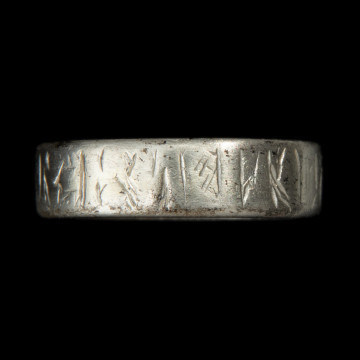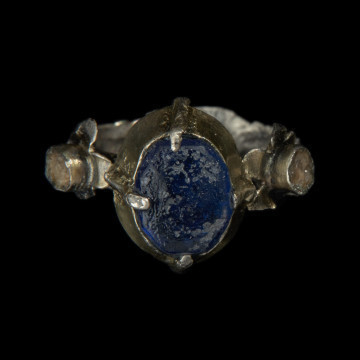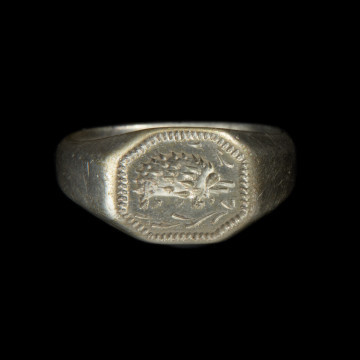
Wedding ring
przełom XIV i XV wieku
National Museum in Szczecin
Part of the collection: Szczecin treasure from Podzamcze
The ornaments of a medieval costume seemingly constituted only its extra element. They were a visible sign of wealth and prestige of the wearer. In the late Middle Ages, silver ornaments in the form of rosettes, badges or openwork buttons, also called buttons, became fashionable. Rows of buttons made of precious metals and brass were most often placed on the front of a garment. From the 14th century onwards, buttons were also used to fasten narrow sleeves, which became increasingly fashionable in women's and men's clothing. Together with other late Gothic silver jewellery, this type of decoration was discovered in Szczecin during excavations in the Podzamcze area. Among the buttons, there was an openwork basket-shaped specimen, in the form of a dome imitating a filigree pearl wire, made using the casting technique, which involves pouring molten metal into a previously prepared stone or clay mould. In this work, crucibles were used, i.e., casting vessels, in which the metal melted on the hearth, and a casting mould, in which the metal solidified. Elements of objects cast in moulds were joined by soldering with molten metal, the so-called solder, which melted with the joined fragments. The solders used in goldsmithing are mainly silver- based.
Małgorzata Peszko
Author / creator
Dimensions
cały obiekt: height: 1,4 cm, diameter: 1,11 cm
Object type
menswear
Creation time / dating
Creation / finding place
Identification number
Location / status

przełom XIV i XV wieku
National Museum in Szczecin

National Museum in Szczecin

przełom XIV i XV wieku
National Museum in Szczecin
DISCOVER this TOPIC
Museum of King Jan III's Palace at Wilanów
DISCOVER this PATH
Educational path